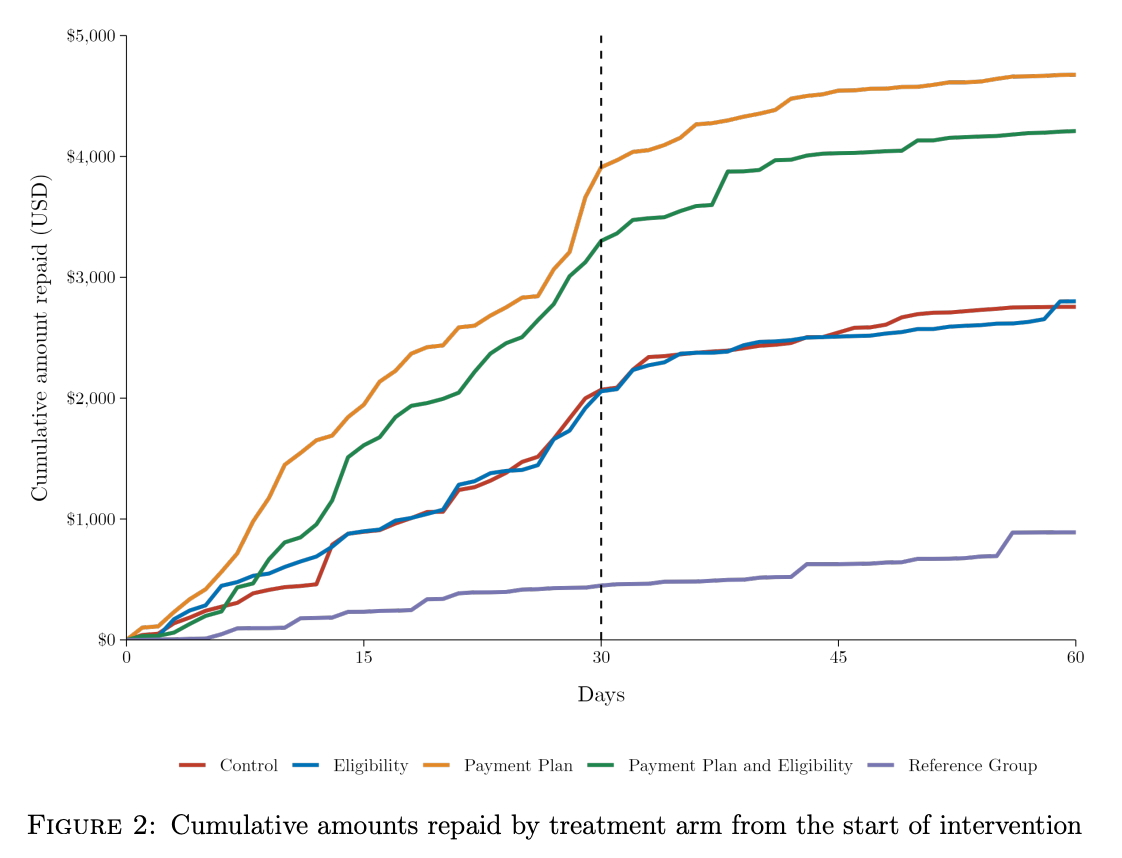Research
Publications
Retirement, Retention, Recruitment: Evidence from a Federal Pension Policy
Labour Economics, 2025
Click to view abstract
I exploit a policy change for U.S. federal workers’ pension benefits to estimate the effect of pension generosity on worker retirement, retention, and recruitment. The policy increased pensions by 16-25%. I find there is a 30.3% decrease in job quits for permanent workers. However, there is little evidence that pension generosity has an effect on new hires. This suggests salience may play a role in how workers value pensions. Additionally, I find a large heterogeneous labor supply response to pension generosity. Altogether, this shows that pension generosity is effective in retaining workers and may have important implications for workforce planning.

Working Papers
Rehabilitating Delinquent Digital Borrowers (with Alfredo Burlando, Silvia Prina, and Michael Kuhn)
Submitted
Click to view abstract
We partner with a digital lender in Africa to examine how offering delinquent digital borrowers a strategy to repay their overdue loan (payment plan) and the possibility of regaining access to future credit (renewed eligibility) affects repayment behavior and welfare. The payment plan significantly increases repayment, settlement, and re-borrowing, while eligibility alone has no effect. Although the payment plan has no impact on welfare, the eligibility treatment raises stress and perceived financial insecurity. Our analysis suggests that impatience, time inconsistency, and liquidity constraints could play a role in explaining our results.

How did federal agencies respond to disability quotas? (with Glen Waddell)
Under review
Click to view abstract
We study the rollout of two disability related policies that intended to increase representation in the U.S. federal workforce—an executive order to increase employment across all agencies, and a second that mandated quotas be met at each agency. The first of these is followed by a large increase in disability employment. At lower-pay positions, increases in representation are largely through hiring, while at higher-pay positions increases are through updating disability statuses. However, with the quota introduction we find evidence that agencies target the minimum threshold—this lead to declines in disability representation at agencies that were already in compliance.

Recruitment, Retention, and Retirement Plan Structure: Evidence from Teachers (with Noah Burke)
Submitted
Click to view abstract
In 2006, the State of Alaska transitioned from a defined benefit retirement system to a defined contribution system for all newly hired public education employees—a majority of which are teachers. For employees, these plans accrue approximately similar wealth at retirement. Using administrative records, we examine whether the reform altered labor market outcomes for new cohorts. At the threshold of policy implementation, there is no significant change in new hires for both quantity and observable characteristics such as age or previous experience. Further, there is no significant difference in retention up to 14 years post-policy implementation.

Works in Progress
Life Insurance and Adverse Selection: Evidence from FEGLI
Gender and Employee Performance Reviews: Thirty Years of Evidence
Till Coverage Do Us Part: Evidence on Marriage and Insurance Decisions
Media
News
Disparaging dismissals aside, Alaska’s fired federal workers file for unemployment
At least 138 fired federal employees have applied for unemployment insurance in Alaska
Expert Testimony
Economic Contributions of Federal Civilian Workers in Alaska
Podcasts
Brock Wilson, PhD: Labor Economist at UAA’s Institute of Social & Economic Research (ISER)
